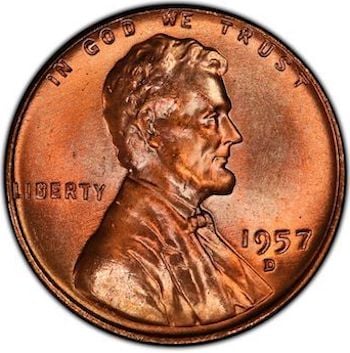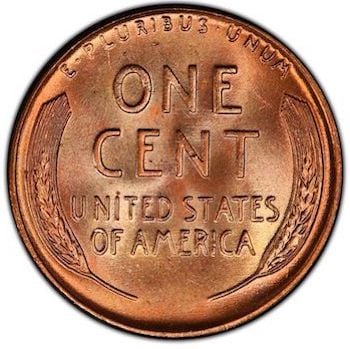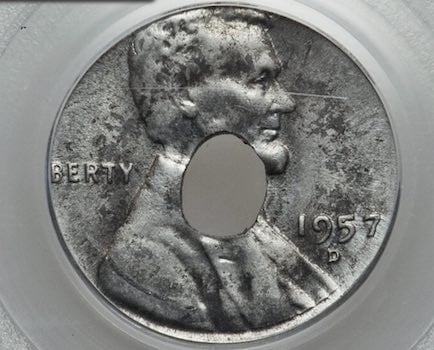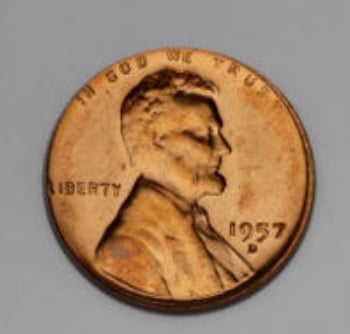Ed. note: This article is periodically updated to reflect the current price of most valuable coins.
In Coleccionistas de Monedas, we fight against the misinformation surrounding the world of coins on the Internet. For this reason, our articles are entirely written by people, not AI or other automated systems. Additionally, we link to all sources and references for coin prices, with the goal of providing you with real, updated, and reliable information.
How do we verify coin prices and values?
At Coleccionistas de Monedas, we are committed to providing accurate, trustworthy, and well-sourced numismatic information. We understand that articles about coin values can influence important financial decisions, which is why we apply a clear and rigorous methodology to estimate prices.
Sources used
- PCGS Price Guide: The official pricing guide from the Professional Coin Grading Service.
- NGC Price Guide: Updated valuation system from the Numismatic Guaranty Company.
- Heritage Auctions: Database of real auction sale prices.
- Red Book: Printed guidebook with historical pricing by grade.
- eBay Sold Listings: Only completed sales are considered, not asking prices.
Validation process
- Price review by condition grade using standard scales (MS, AU, XF, VF).
- Verification of varieties and errors through multiple data sources.
- Expert consultation when prices significantly deviate from the norm.
- Regular updates to reflect current market trends.
Important disclaimer
The values presented in this article are for reference purposes only. Final coin prices can vary significantly depending on authenticity, grade, and selling context. We strongly recommend having your coin certified by a professional service such as PCGS or NGC before selling or purchasing it as an investment.
There is no doubt that in the United States one of the most recognized coins by all collectors in particular, or citizens in general, are the pennies (or cents). More info about the rarest and most valuable wheat pennies.
JUMP TO SECTION
1957 D Wheat Penny Value (8-Graded Scale by its conservation)
Coleccionistasdemonedas.com Estimated Value of 1957 D Wheat Penny Value is:
| 8-Grade Scale | MS60 | MS61 | MS62 | MS63 | MS64 | MS65 | MS66 | MS67 |
|---|---|---|---|---|---|---|---|---|
| Value | $2 | $2 | $3 | $4-5 | $7-8 | $15-18 | $25-55 | $300-4,250 |
It is the currency with the lowest circulating value in the country, which is why it is so abundant in our pockets. Its high issuance to meet market demand, makes them common but, for this same reason, they are usually found worn.
The collector values when a penny is in good preservation, a factor for which he is able to pay high amounts, especially for an excellent specimen. Also certain errors can greatly increase its value, due to their scarcity and their high demand by collectors, as we will see later on.
We can see as a reference price this 1957 D Wheat Penny in MS67+ quality that achieved (Denver Mintmark), in 2019, a price of $3,840 at the prestigious Heritage auction house.
How do I know if I have a 1957-D Wheat Cent?
Since 1909, U.S. pennies have featured the bust of Lincoln on the obverse, a design by Victor David Brenner.
Materials
The weight of these coins remained at 3.11 grams until 1982. The metals that make up a 1952 Wheat Penny are 95% copper and 5% tin and zinc. In contrast, today they weigh as little as 2.5 grams and are made of copper-colored zinc.
Obverse and reverse coin design
On the reverse of the one-cent coins minted between 1909 and 1958, we can see two ears of wheat surrounding, as if it were a laurel wreath, the central legend “ONE CENT – UNITED STATES OF AMERICA“. Just above this legend, appears the Latin motto “E PLURIBUS UNUM” (From many, one), common on American coins.
These spikes are what give the Wheat Penny its name. To know the year of the coin we must look at the obverse. There we can see on the right side of Lincoln’s bust “1957”. Under this number there may or may not be a letter, this is the mint, that is, the factory where it was minted. Above the bust of Lincoln, another motto appears, “IN GOD WE TRUST“, and to the left of it, the word “LIBERTY“.
Types of mintmarks
Although we focus on the Denver mint in this article, it should be noted that there is another mint, the Philadelphia mint. In many other years of the Wheat Penny there is also the San Francisco mint, but in this case there is not.
To identify the mints on our cents, just look at the letter on the obverse, which has been mentioned above, under the number indicating the year of issue.
D Wheat or not? 1957 mintmarks
In case you do not see any letter below the date your coin was minted at the Philadelphia mint. On the contrary, if a letter D appears, your cent was issued by the Denver mint.
In 1957, more than 1.3 billion Wheat Penny were minted in total. In Denver, 1,051,342,000 were produced; a big number!It should be noted that of the large number of coins issued in Denver in 1957, not all have survived to the present day, and the number of these cents available is much smaller.
How do I know the grade of my coin?
The higher the grade, the higher the price increases exponentially, since it is a factor of great importance, especially in coins that tend to circulate a lot, as is the case of cents.
To know the state of conservation of the coin we own, or want to buy, we need to have an expert eye that we can hardly acquire without time of experience. That is why it is not a bad idea to resort to a TPG (Third Party Grading Service). These are companies dedicated to evaluate and grade our coins according to their condition. In addition, they certify the authenticity and encapsulate the coin for security purposes, both for its preservation and to facilitate its sale.
List of rarest 1957 D Wheat Pennies and their prices.
As is always the case with coins, the state of preservation largely determines the market price. In this case we can see the enormous difference between two coins, they can be worth from $50 to over $7,000.
Rare 1957 D Wheat Penny Chart Value
| Error Type | Estimated price |
|---|---|
| 1957 D Wheat Penny coined on washer | $7,425 |
| 1957 D Wheat Penny Double mint | >$20 (MS64) |
| 1957 D Displaced Minting | $150 (%40) |
| 1957 D “BIE” (Breakage of stamp) | >$20 |
| 1957 D Sheets (lamination) | $30-50 |
As we said before, there are peculiarities beyond the graduation which increase the price of this type of one-cent coin, such as errors. These arise due to faults or corrections at the time of minting. They are usually very rare, and this is the reason for their high value, collectors are willing to pay more for these rarities.
Here you can see a list with the most notable Wheat Pennies classified by their rarity and price:
#1 Coined on washer rarity
Is it true? This is the design of the Wheat Penny we know, but this time minted on a washer of uncertain provenance. Probably a unique specimen, although it is worth keeping an eye out for such a rare specimen.
Heritage Auctions auctioned it for $7,425 despite its MS62 quality, but what more can you ask of a washer?
#2 Double mint error
This is a common error in most coin values and coin years. It is formed when the coin is struck twice at the time of minting. This can cause double images on the struck side, like a relief effect.
#3 Displaced minting error
Another classic error in coins is the offset minting. This, as its name indicates, consists of a misalignment of the coin at the time of minting, which causes the drawing to be off-center.
In the coin in the image we can clearly see how the design is out of place. The greater the displacement, along with the quality of the coin, the greater the value of the coin.
The reference price in this case auctioned by Heritage Auctions is $149.50 with an AU58 quality and a 40% offset.
#4 1957 D “BIE” (Breakage of stamp)
BIE is the code name given to this 1957 D Wheat Penny error. An error that causes the obverse to read “LIBIERTY” instead of “LIBERTY”. This error is due to a die break in that area.
Depending on how clear that extra “I” is and the quality of the coin, it can have a higher or lower price, but in general it usually exceeds $20.
#5 1957 D Sheets (lamination)
This is an error in the coin blank (probably due to impurities in the alloy), which at the time of minting fragments in the damaged part forming a kind of “leaf” in the final design.
There may be more or less in a single coin, and this affects the price of the coin. Usually there is only one if there is an error. The price in that case is between $30 and $50.
Is it a good idea to invest in 1957 pennies? My opinion
1957 is the penultimate year of the Wheat Penny, and despite not being a rare coin, it is especially curious as these last three years were only produced at two mints, Philadelphia and Denver.
It is interesting as a hobbyist to review these small coins in case we find a good specimen in our homes, or even better, some peculiar error for the collection, or for sale.
On the other hand, pennies are often a good way to get into collecting, both for young and old, due to their low price in the lower grades.
We remind again that cleaning coins diminishes their value in practically all cases, so it is important to consult a specialist in each particular case before proceeding with something irreversible.
And finally, if you want to expand the collection starting from your 1957-D Wheat Penny, you can start with the Philadelphia mint, or by completing by years (and mints) of these pennies (1909-1958) or up to our days with the new designs.
References and sources
- Heritage Auctions
- NGC Coins
- The Official Red book 2025: A Guide Book of United States Coins.







